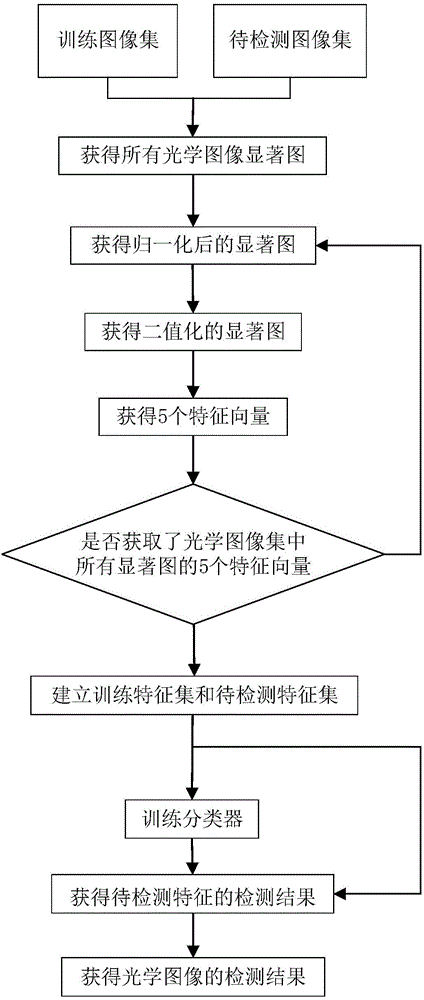Method for detecting existence of salient objects in optical images
A technology of optical image and detection method, which is applied in the computer field, can solve the problems of limited classification accuracy and difficult to clearly reflect the difference
- Summary
- Abstract
- Description
- Claims
- Application Information
AI Technical Summary
Problems solved by technology
Method used
Image
Examples
Embodiment Construction
[0048] Attached below figure 1 The steps of the present invention are further described in detail.
[0049] Step 1: Input optical image set.
[0050] Input a human-annotated training set of optical images.
[0051] Input the optical image set to be inspected.
[0052] Step 2: Obtain a saliency map of all optical images.
[0053] The saliency maps of all the images in the artificially marked training optical image set and the optical image set to be detected are respectively obtained by using the center-periphery histogram algorithm.
[0054] The specific steps of the histogram algorithm around the center are as follows:
[0055] According to the following formula, calculate the distance between the RGB color histogram of the rectangular area and the rectangular ring area surrounding the rectangular area:
[0056] X 2 ( R ( x ) , ...
PUM
 Login to View More
Login to View More Abstract
Description
Claims
Application Information
 Login to View More
Login to View More - R&D
- Intellectual Property
- Life Sciences
- Materials
- Tech Scout
- Unparalleled Data Quality
- Higher Quality Content
- 60% Fewer Hallucinations
Browse by: Latest US Patents, China's latest patents, Technical Efficacy Thesaurus, Application Domain, Technology Topic, Popular Technical Reports.
© 2025 PatSnap. All rights reserved.Legal|Privacy policy|Modern Slavery Act Transparency Statement|Sitemap|About US| Contact US: help@patsnap.com



